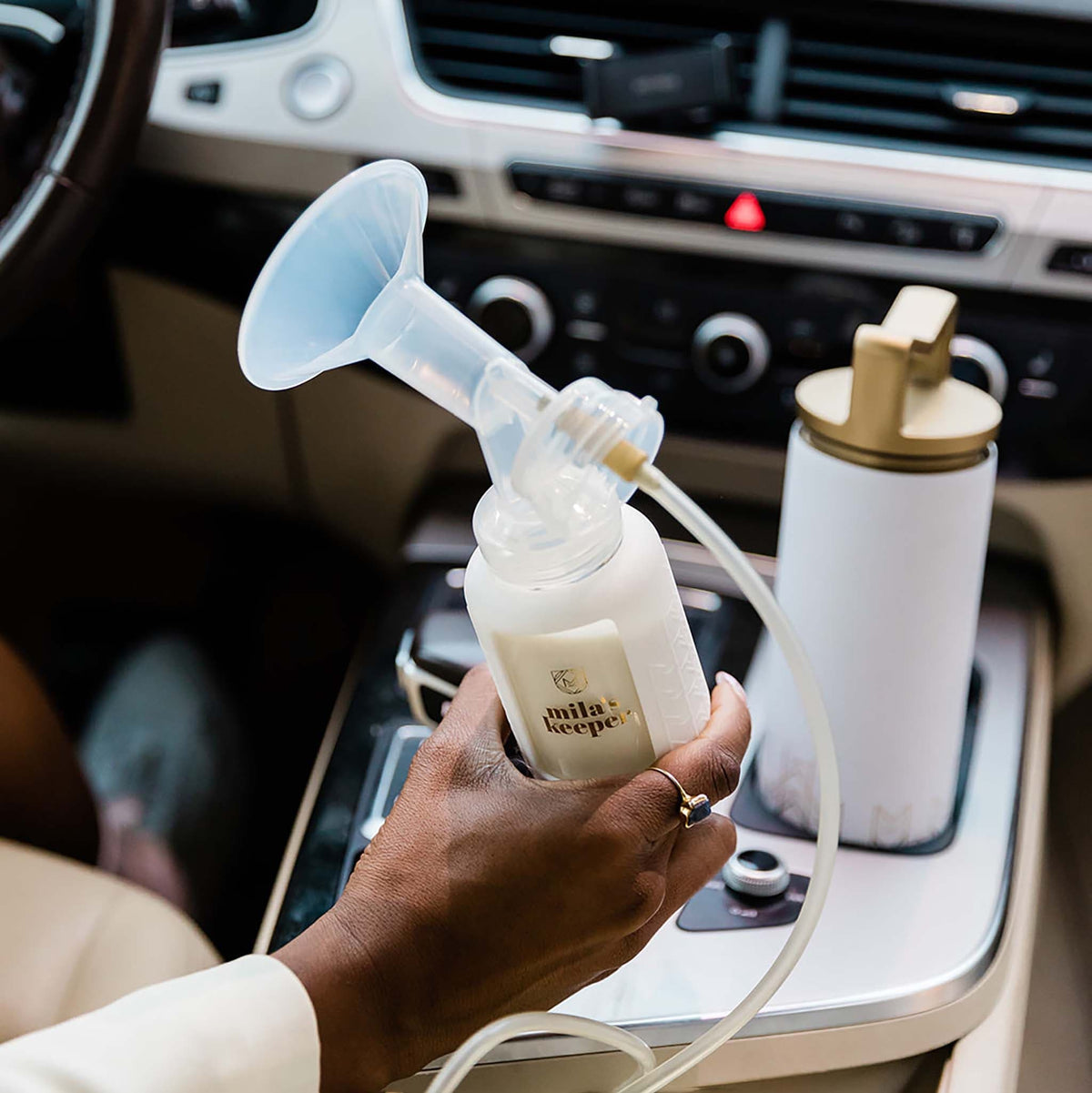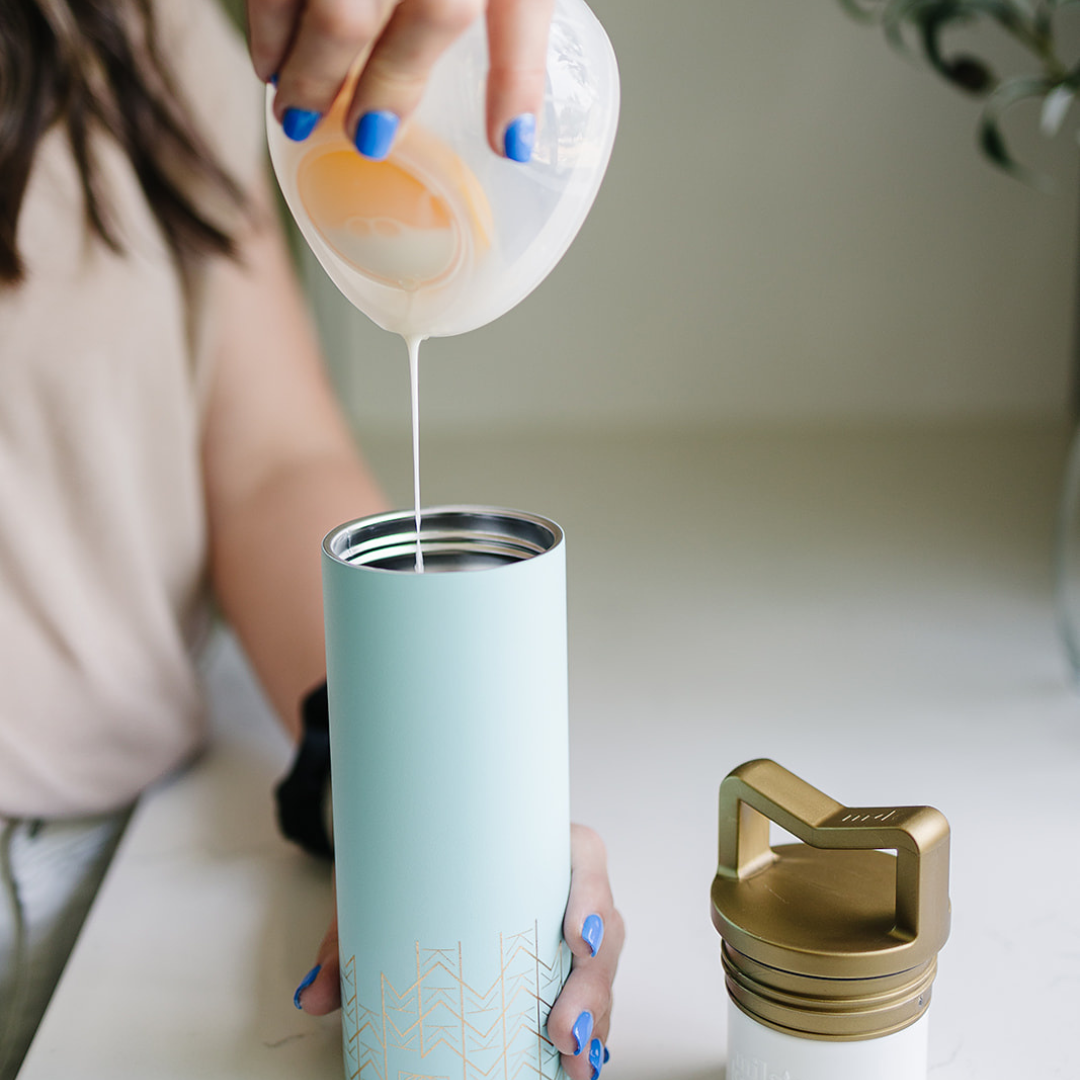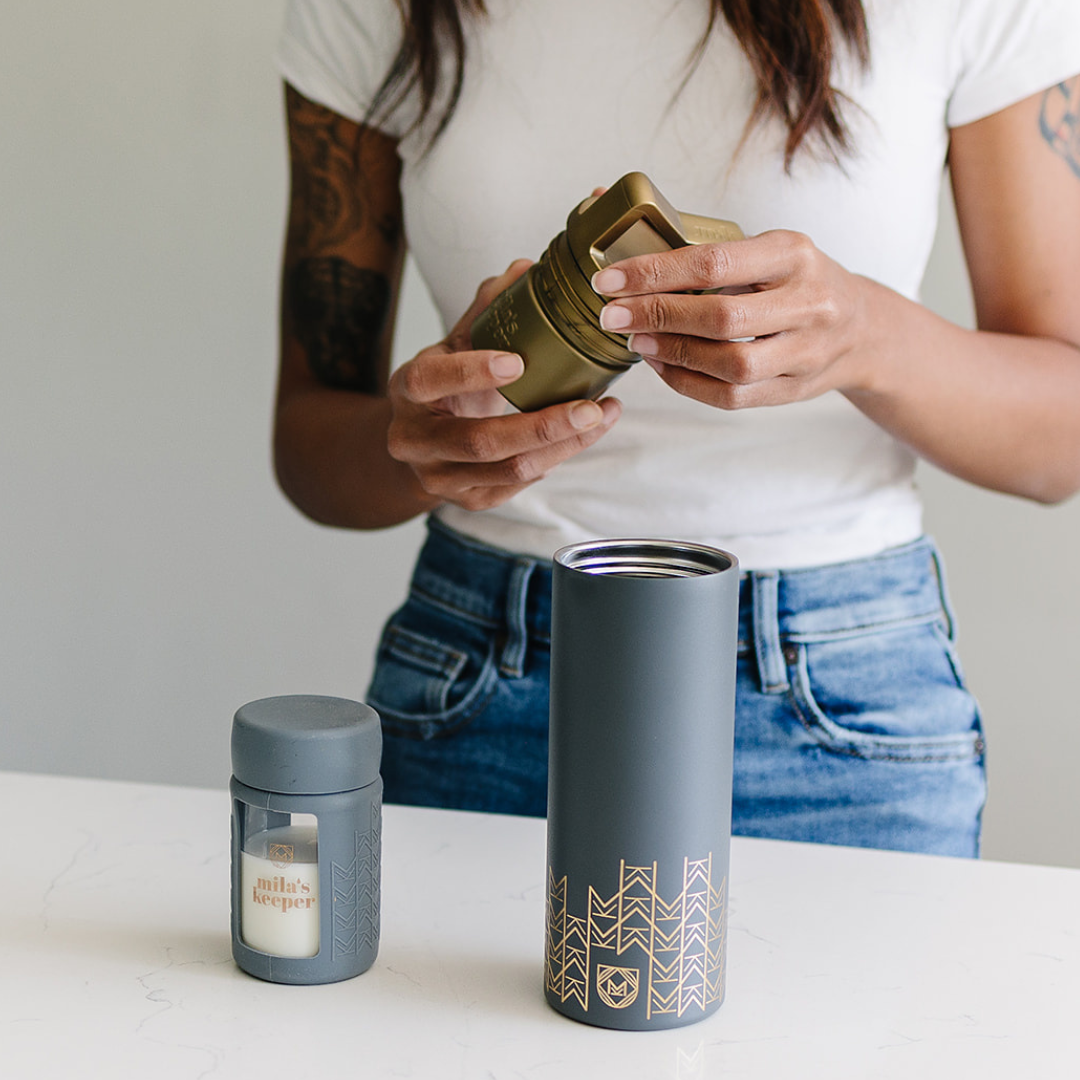Returning to work after having a baby is a bittersweet time for many new mamas. Thanks to the work done by policy makers and breastfeeding advocates over the years, they have helped to improve this transition and laws now support moms breastfeeding journeys through providing time and a dedicated location to pump at work.
The Pump Act, just recently passed by both the House and Senate since its official date of December 28, 2022, the laws supporting breastfeeding moms have been extended from one year to two years, and to millions of more moms not previously eligible. Break times can now be paid if we can show that we are indeed working while pumping! Some jobs of course, do not lend themselves to be abie to do this - so we still have some work to do! Finally the Pregnancy Worker Fairness Act protects medical needs of women who need special accommodations at work to make sure she has a safe pregnancy.
Supporting breastfeeding mamas at work is widely beneficial to the employer as it has been shown that breastfeeding employees miss less work due to the multitude of health benefits breastfeeding has to offer mothers and their babies. In addition, breastfeeding friendly workplaces retain employees due to the provision of breastfeeding support resulting in improved loyalty and increased productivity to the company.

Preparing to Return to Work
Preparing for your breastfeeding journey starts when you are pregnant. First and foremost, you must decide if breastfeeding is the journey that you want to take. Many working moms will decide against breastfeeding because they do not think they will be able to continue to breastfeed once they return to work due to their time. As we discussed in the prior blog post, it is your company’s responsibility according to the Fair Labor Standards Act (FLSA) to provide you a reasonable amount of time to express milk during your work day in an appropriate location other than a restroom.
1. Speaking with Human Resources about Lactation Accommodations
While you are pregnant, prior to your maternity leave, you can talk with your human resources department about your plans to breastfeed and the need for an appropriate place to pump in a dedicated lactation room that is equipped with a locked door and an outlet. Additionally, keep in mind that all of these requirements in addition to reasonable break times are your rights and you are protected by FLSA. By speaking with human resources ahead of time can help to provide your company with plenty of time to identify and prepare a lactation room prior to your return if they do not already have one.
Now that breastfeeding is supported by employers through FLSA in the United States, we can talk about how to prepare going back to work while breastfeeding. In addition, legislation for the Pump Act and Pregnant Worker Fairness Act has been passed by both the House and Senate! In our next blog topic, we will be covering this exciting news and helping you understand how to navigate this topic with Human Resources.
2. Establishing a Good Milk Supply Early On
Establishing breastfeeding when you first have your baby is the most important place to start your breastfeeding journey. The main concept to keep in mind when breastfeeding is to make sure you are emptying your breasts every 2-3 hours during the day and not going longer than 6 hours at night. This helps to continue telling your body that you need to keep producing milk. Your milk supply is all about supply and demand. If you leave milk in then it tells your body you do not need that milk. As long as you are removing milk frequently and efficiently then it is sending signals to your body to keep producing milk.

3. Testing the Bottle Beforehand
Many moms dread the idea of switching to a bottle and have challenges getting their little one to take a bottle. The key before introducing the bottle is to make sure your breastfeeding relationship with your little one is well established prior. It is recommended to introduce the bottle to a breastfed baby around 4 weeks of age. You can start by providing your little one with 2-3 ounces of expressed breastmilk once a day using the paced bottle feeding method. Here is a resource to help with determining how much expressed breast milk your little one may need. By starting the bottle early on this helps to transition the baby from solely feeding at the breast for each feeding.
4. Establishing a Relationship with your Pump
The most important and obvious piece of pumping equipment you need for returning to work is your breast pump. Keep in mind like we discussed in our last blog post, the breast pump is covered by your insurance at 100% due to laws being put in place by the Affordable Care Act. Before going back to work you want to make sure the breast pump is working appropriately and you have the correct flange sizes for your breasts. As a technical note, your nipple should be directly in the center not touching either side of the flange to ensure effective removal of milk.
Depending on your needs there are several different types of pumps that you can choose from and that work best with your body. There are hands free pumps, dual electric pumps, single electric pumps and manual pumps. Dual electric pumps pump both breasts at the same time increasing efficiency while being efficient at extracting the milk out. Single electric pump pumps one breast at a time. When you get a dual electric pump, you can also use on a single breast when using the appropriate equipment. All manual pumps are single pumps, so you have to pump one breast at a time. Some of the common brands for electric pumps include Medela, Lansinoh and Spectra. Lastly there are hands free pumps, which also come as single or double, but allow you walk around and do things while being connected to the pump. Some of the popular hands-free pumps include the Elvie and the Willow.

It is recommended to begin pumping early on after birth to help familiarize your body with the breast pump. You can begin pumping as many times extra as you would like, but you do not have to overdo it. You always produce more milk in the morning than the afternoon and therefore will have a higher output of milk with the pump in the morning versus at night. You can pump directly after you get finished with nursing your little one. We will talk about why it is beneficial to pump extra and store it at the next check point.
5. Building a Freezer Stash
Developing a freezer stash can be beneficial for many reasons outside of just returning to work including needing to leave your little one for any period of time just to get out or in the case of an emergency. By establishing a good milk supply and a relationship with you pump alongside breastfeeding early on, it can help you to build a freezer stash. You can begin building your freezer stash by pumping 1-2 times extra times throughout the day and storing that breast milk in the freezer. You can pump an extra amount of milk for storage directly after nursing your little one. Frozen breast milk is good for 6 months in a regular freezer and 12 months in a deep freezer. Find more information on storage guidelines here.
6. Milk Storage Equipment
Once you have started storing milk or collecting milk while pumping at work, you will then need to decide how you would like to store your breast milk. There are multiple options for how to store your breast milk it is just a matter of deciding which method is best for your situation. You must think about what you have available to you when you return to work. Remember from our last post it is your company’s responsibility to provide you a designated place to pump, but it does not state that they must provide a fridge or a place to store your breast milk. Some companies will provide a fridge as a courtesy while others may not. You will need to decide initially where you will store your breast milk to keep it cold. According to the Centers for Disease and Control (CDC) breast milk storage guidelines, breastmilk can remain at room temperature for up to 4 hours, in a fridge for up to 4 days and in a freezer cooler bag for up to 24 hours If you do not have a fridge at work then a good option is an freezer cooler bag or a breast milk insulated cooler such as those produced by Mila's Keeper. Having an insulated breast milk cooler is not only useful to store breastmilk while at work, but it is also useful for when you are out and about needing a place to store your breast milk.
Lastly, you will need to decide how you will store your milk which is usually in disposable breastmilk storage bags or glass milk storage bottles. The most economical and cleanliest approach would be to utilize glass milk storage bottles that you would clean and sterilize after each use.

7. Maintaining your Milk Supply at Work
When you return to work, you want to make sure you do the best you can to help maintain your milk. As we discussed above, your milk supply works on a supply and demand basis, the more you take out the more you make and your body maintains because you are continually taking the milk out. If you leave milk in then it tells your body you do not need that milk. When pumping at work to ensure you are maintaining your milk supply, you want to pump throughout the day to mimic the feeds of your little one. For instance, you will want to try and pump every 3-4 hours with every 3 hours being optimal. Pumping every three hours allows you to utilize your two breaks and your lunch during an 8-hour work day. Ensuring you pump every 3 hours will help to continue to tell your body that you do indeed still need the milk. For each pumping session, it takes about 10-15 minutes to effectively empty your breasts within the allotted reasonable time frame.
Returning to work is yet another milestone in your new mama journey. Luckily, breastfeeding is widely supported in the work place due to laws such as the Pump Act, put into place helping to make it easier for mamas to breastfeed longer and reach the recommendations put forth by the American Academy of Pediatrics, which is to exclusively breastfeed for 6 months and complimentary breastfeed from 6-12 months of age. The longer you breastfeed the more protective the benefits are for your little one.
Our blog today has provided you with some of the key points for returning work and what you need to be focusing on from the very beginning of your pregnancy journey. We hope the list above provides you with some basic background to help establish your breastfeeding journey and continue your journey while returning to work. Below we have provided you with some helpful resource to help you along your breastfeeding journey while returning to work.
Breakdown of Resources for Returning to Work:
|
Breastfeeding and Working |
|
|
Breast Pump |
Breastfeeding USA - Choosing a Breast Pump
|
|
Breast Milk Storage Guidelines |
|
|
Bottle Feeding |
|
Keep Reading: Six Tips on When to Choose to Start Your Maternity Leave.
--
A female-designed and female-run company, Mila's Keeper is on a mission to empower women to thrive during their breastfeeding journey by offering reusable, eco-friendly breast milk storage solutions for their day-to-day needs. Get the latest tips and info on Mila's Keeper products by following us on Facebook, Twitter, Instagram, Pinterest, and LinkedIn.























